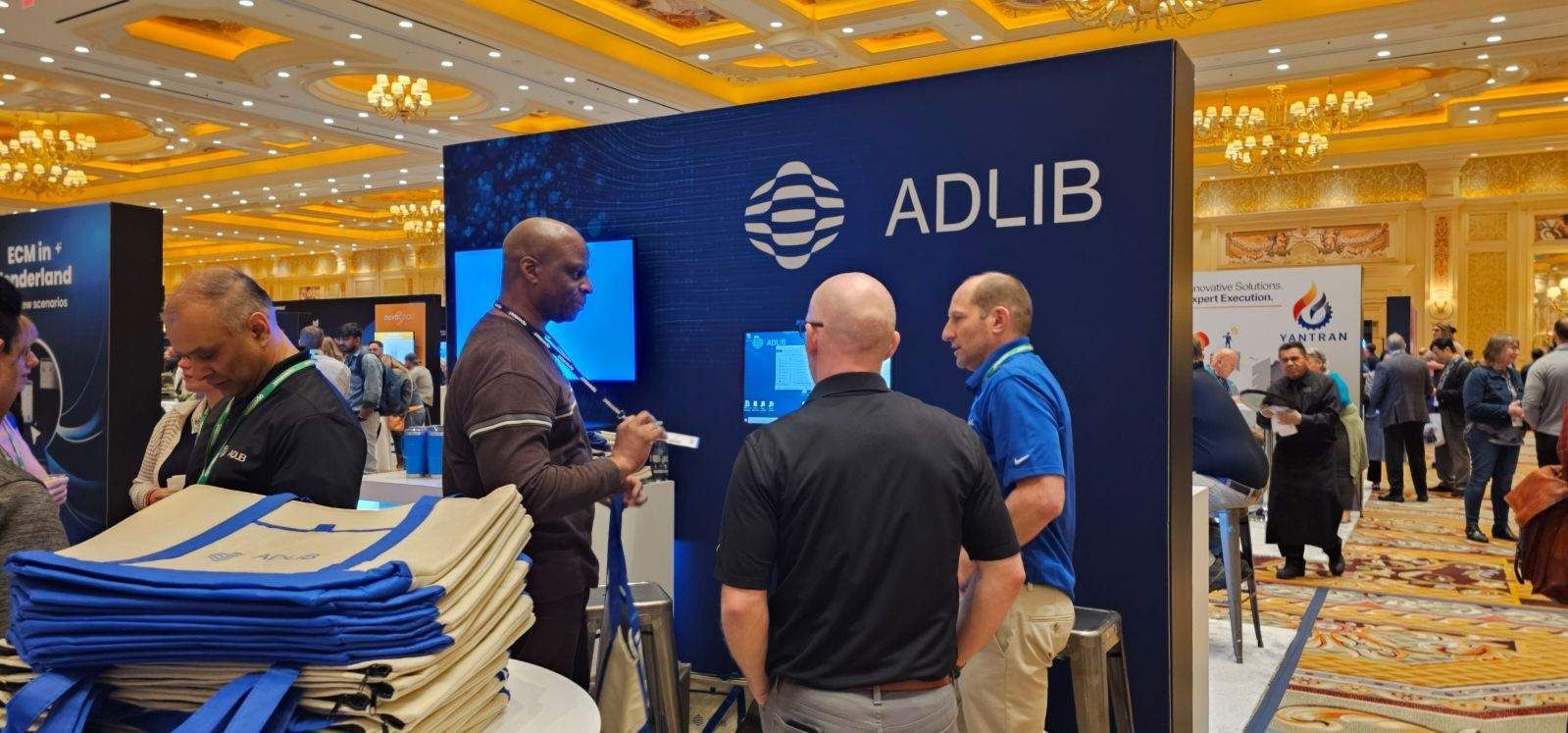Digital documents are central to every business process, ensuring accuracy, completeness, and compliance is required to maintain audit trails and effectiveness. Document validation, the process of verifying the integrity and quality of documents, has become a critical step in many workflows, and often times this is still being done manually. FlowWright and Adlib, both leaders in process automation and document processing, now offer a robust solution for automating document validation. This blog shares how our two platforms work together to streamline document validation, enabling businesses to improve accuracy, ensure compliance, and maintain operational efficiency.
The Importance of Document Validation
Document validation involves confirming that a document meets specific standards and requirements. It ensures that critical information within a document is accurate, that the document is complete, and that it complies with relevant regulations. This process is crucial for industries where errors in documentation can lead to significant risks, such as healthcare, finance, and manufacturing. By automating document validation, businesses can save time, reduce human error, and improve the quality of their documentation processes.
FlowWright and Adlib: A Powerful Pair for Document Validation
FlowWright and Adlib integrate seamlessly to create an efficient, automated document validation system. Here’s a breakdown of their roles in this solution:
- FlowWright’s Automation Engine: FlowWright automates complex workflows, enabling teams to create rules for document validation, monitor compliance, and track document lifecycles. Its low-code environment makes it easy to design and implement validation workflows tailored to specific business needs.
- Adlib’s Document Transformation and Validation Capabilities: Adlib uses AI-powered document intelligence to analyze and validate document content. With advanced data extraction, OCR, and validation algorithms, Adlib ensures documents meet accuracy and completeness standards, readying them for further processing or storage.
Together, FlowWright and Adlib provide an automated document validation system that can handle high volumes, meet stringent standards, and ensure compliance across the board.
How FlowWright + Adlib Perform Document Validation
Let’s explore how FlowWright and Adlib validate documents in a step-by-step process, from document ingestion to final validation confirmation.
Step 1: Document Ingestion and Preprocessing
The process begins when FlowWright receives documents from various sources. Whether documents are uploaded manually, received via integrated systems, or automatically pulled from designated sources, FlowWright initiates the document validation workflow.
Before proceeding with validation, Adlib preprocesses the documents to prepare them for optimal accuracy. This might involve enhancing document quality, standardizing formats, and converting non-editable documents (like scanned PDFs) into machine-readable text through OCR (Optical Character Recognition).
Step 2: Content Extraction and Validation Criteria Setup
Adlib extracts critical information from the documents using OCR and machine learning algorithms. The extracted data includes essential metadata, such as document type, date, author, and keywords, as well as structured information within the document, such as specific form fields, tables, and signatures.
Once extracted, FlowWright applies validation criteria based on organizational requirements or regulatory standards. For instance, for a healthcare document, FlowWright may check if required patient details are present and accurate. In a financial document, validation might ensure that amounts, dates, and tax information are correctly formatted and compliant with accounting standards.
Step 3: Rule-Based Validation in FlowWright
FlowWright enables teams to set up customized validation rules based on the content and metadata extracted by Adlib. These rules vary depending on the type of document and business requirements.
For example:
- Invoices might require validation of the invoice number format, total amount, and due date.
- Contracts could need verification of key legal phrases, signature presence, and date of execution.
- Technical Reports might require structured sections, accurate calculations, and specific terminology.
Using FlowWright’s low-code interface, users can establish these rules without extensive programming knowledge. Once configured, FlowWright checks each document against these rules, flagging documents that fail validation criteria.
Step 4: AI and Machine Learning for Enhanced Validation
Adlib’s AI-powered validation features go beyond rule-based checks. By learning from historical data and past validation processes, Adlib can identify patterns, detect anomalies, and flag potential issues that might not be evident through predefined rules alone. For instance, if the AI observes frequent discrepancies in certain fields, it can refine validation checks to capture similar errors in the future.
Machine learning enables Adlib to handle complex validation scenarios where rule-based systems may fall short. It can also improve the system’s accuracy over time, reducing the need for manual corrections and enhancing the reliability of automated validation.
Step 5: Exception Handling and Workflow Routing
In cases where a document fails to meet validation criteria, FlowWright’s workflow automation routes it for exception handling. This process may involve sending the document to a specific team or user for review, marking it for correction, or initiating a secondary validation process.
FlowWright’s automation engine also logs any validation failures, providing an audit trail that supports transparency and compliance. Each exception is tracked and documented, allowing teams to monitor recurring validation issues and improve future processes.
Step 6: Validation Confirmation and Document Storage
Once a document passes all validation checks, FlowWright confirms validation and routes the document for storage in an integrated document management or enterprise content management (ECM) system. FlowWright ensures that the validated document is stored in the correct location and accessible for future reference.
Adlib’s metadata extraction enables documents to be categorized and stored based on key identifiers, such as document type, date, and associated project or client. This structured storage approach simplifies document retrieval, ensures compliance with data retention policies, and prepares documents for further workflow stages, if needed.
Benefits of FlowWright + Adlib teamwork for Document Validation
Implementing FlowWright + Adlib for document validation offers numerous advantages:
- Increased Efficiency: Automating validation enables businesses to process high document volumes quickly, ensuring consistent quality across documentation without manual intervention.
- Improved Accuracy: Adlib’s AI-driven validation algorithms provide high accuracy, reducing the risk of errors in critical documentation, which can lead to compliance issues or operational disruptions.
- Scalability: As document volumes grow, FlowWright + Adlib can scale to handle increased loads, ensuring that validation processes remain efficient and effective.
- Compliance Assurance: With FlowWright’s tracking and Adlib’s content analysis, documents are validated in accordance with industry regulations and standards, providing organizations with peace of mind in regulatory environments.
- Cost Savings: Automated validation reduces the need for manual oversight, lowering labor costs and minimizing errors that could lead to costly mistakes.
Examples of FlowWright + Adlib Document Validation
FlowWright + Adlib’s document validation capabilities are applicable across various industries and use cases. Some examples include:
- Healthcare: Validating patient records, insurance forms, and medical claims to ensure accurate and complete information for regulatory compliance and patient care.
- Finance: Checking invoices, tax documents, and financial statements for accurate reporting and adherence to regulatory requirements.
- Manufacturing: Verifying technical specifications, compliance certificates, and quality control documents for product consistency and regulatory adherence.
- Legal: Ensuring contracts, agreements, and case files contain essential information, are properly signed, and meet legal standards.
FlowWright and Adlib deliver a comprehensive, automated document validation solution that improves accuracy, efficiency, and compliance. Organizations can validate documents quickly, reduce human error, and optimize document processing workflows.
Keep reading our blog for our latest process management tips, and check out our business process automation software to learn more!
See of FlowWright IDP in action. Let's customize your free proof of concept (POC).
Why FlowWright?
Platform
All Rights Reserved | Innovative Process Solutions, Inc. | Privacy Policy







